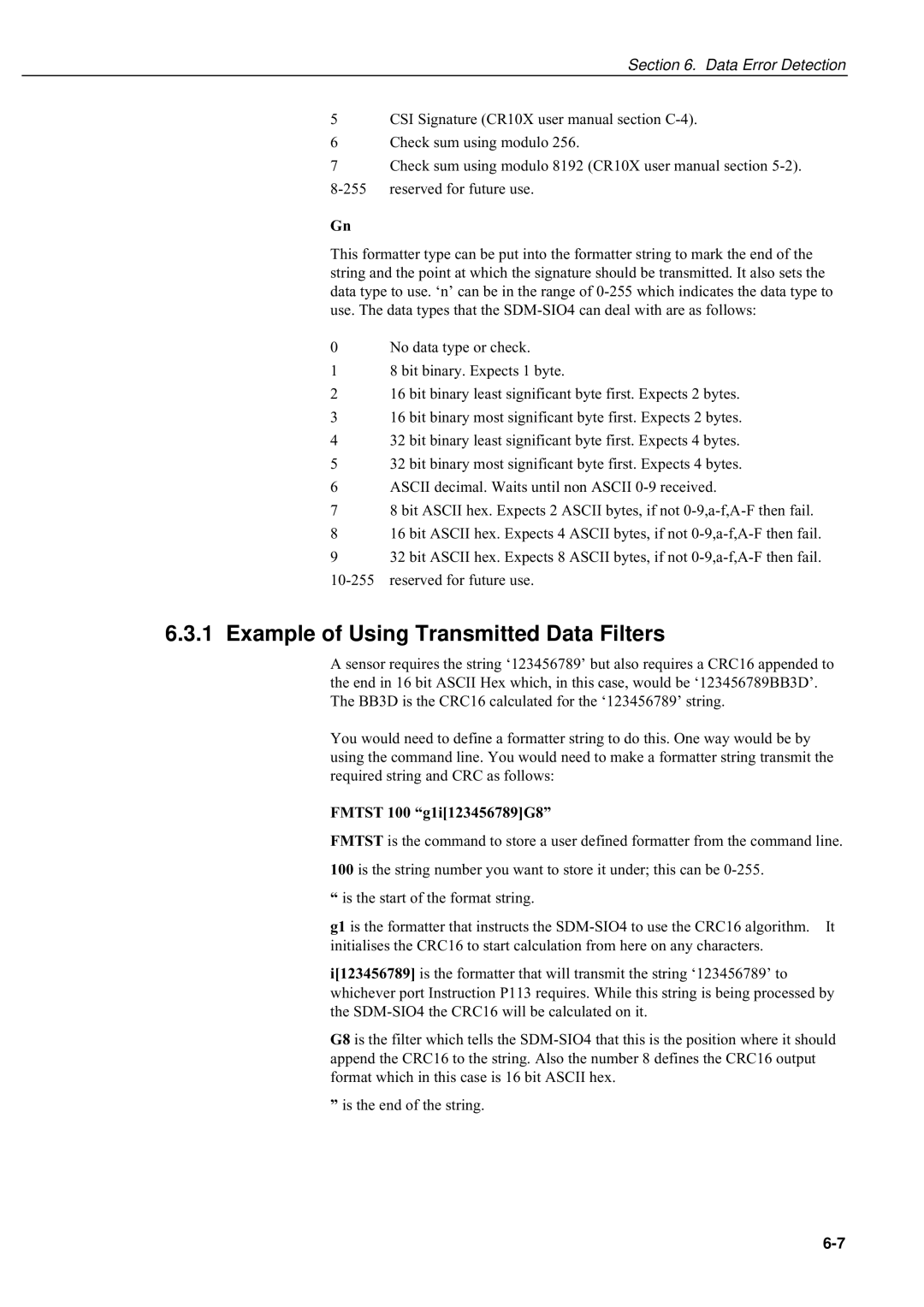Section 6. Data Error Detection
5CSI Signature (CR10X user manual section
6Check sum using modulo 256.
7Check sum using modulo 8192 (CR10X user manual section
Gn
This formatter type can be put into the formatter string to mark the end of the string and the point at which the signature should be transmitted. It also sets the data type to use. ‘n’ can be in the range of
0No data type or check.
18 bit binary. Expects 1 byte.
216 bit binary least significant byte first. Expects 2 bytes.
316 bit binary most significant byte first. Expects 2 bytes.
432 bit binary least significant byte first. Expects 4 bytes.
532 bit binary most significant byte first. Expects 4 bytes.
6ASCII decimal. Waits until non ASCII
78 bit ASCII hex. Expects 2 ASCII bytes, if not
816 bit ASCII hex. Expects 4 ASCII bytes, if not
932 bit ASCII hex. Expects 8 ASCII bytes, if not
6.3.1Example of Using Transmitted Data Filters
A sensor requires the string ‘123456789’ but also requires a CRC16 appended to the end in 16 bit ASCII Hex which, in this case, would be ‘123456789BB3D’. The BB3D is the CRC16 calculated for the ‘123456789’ string.
You would need to define a formatter string to do this. One way would be by using the command line. You would need to make a formatter string transmit the required string and CRC as follows:
FMTST 100 “g1i[123456789]G8”
FMTST is the command to store a user defined formatter from the command line.
100 is the string number you want to store it under; this can be
“is the start of the format string.
g1 is the formatter that instructs the
i[123456789] is the formatter that will transmit the string ‘123456789’ to whichever port Instruction P113 requires. While this string is being processed by the
G8 is the filter which tells the
”is the end of the string.
